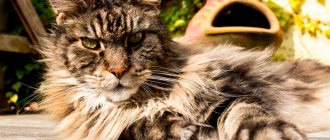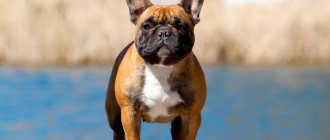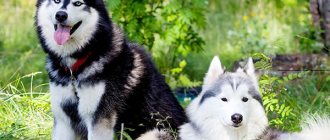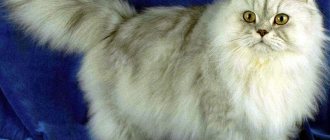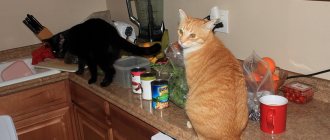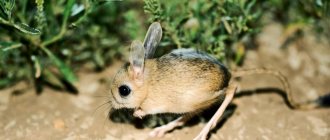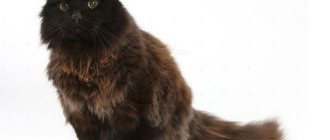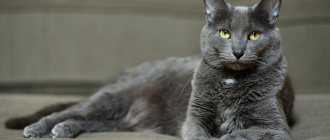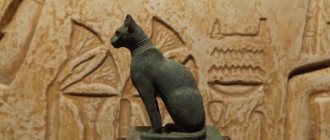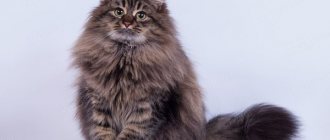The gray color of a cat is considered a sign of its high origin. Pedigree representatives of the cat family have a uniform silver coat with a bluish undertone. These cats are symbols of well-being and harmony. Their color is compared to heavenly and watery shades. Owners of gray cats believe that they bring good luck to the home.
This color can be found in several cat breeds. Gray fur is recognized as one of the characteristics of the breed, and sometimes it is the main difference between one type of cat and another. What cat breeds have this unique and important trait?
Features of gray cats
Gray cats are real aristocrats. Calm, noble, non-aggressive. Animals love their owners, although they do not always show their feelings. In addition, silver cats are not vindictive at all.
Blue cats are independent and slightly proud. From the first day in a person’s home, they try on the role of owner. Owners sometimes feel that they are the ones living in the purr’s territory, and not vice versa.
Kittens have a playful disposition, but as they grow older, cats become quite withdrawn, prefer to keep their distance and only approach a person when they need something. For example, they loudly signal that it is time to eat.
Blue cats are very intelligent, curious, and extremely loyal to humans. Some animals like to sleep on their owner's lap, but there are also those who simply lie down next to them because they do not like tight hugs.
Loneliness does not frighten gray cats. They will always find something to do. Moreover, their aristocratic manners do not go away; often representatives of this color do not stoop to mischief.
Genetics of gray color
The color of a particular breed is determined by various combinations of recessive and dominant genes. The dominant gene, which is responsible for white and black colors, acts as a recessive gene. From a genetic perspective, gray color looks like this: the dominant black gene B is diluted by the recessive light gene d. Under the influence of the second, the dark pigment zumelanin is distributed unevenly in the hairs. The granules stick together, and white spaces appear between them, creating a lightening effect. Accordingly, the more black pigment, the darker the color of the cat’s coat, and vice versa.
Reference. Sometimes, due to a mutation, the black pigment is concentrated at the base of the hair, while the tip remains light.
To achieve a solid color, kittens must inherit the agouti gene, which is responsible for the absence of a pattern, and the lightening gene. It is worth noting that the gray shade does not contain red pigment. In addition, there is a lilac color, for which the “red” gene is responsible. These individuals have a warm fur coat.
Advantages and disadvantages
Advantages of gray cats:
- peacefulness;
- equilibrium;
- lack of aggression;
- attractiveness;
- affectionate disposition.
Blue cats probably have no disadvantages. Perhaps some owners want their pets to be more willing to respond to affection. However, it all depends on the breed and temperament of the animal. Some people also don't like being cuddled and prefer to keep their distance. At the same time, no one is indignant.
Korat
An elegant, medium-sized cat, flexible, strong, muscular but not ponderous, with an amazing heart-shaped head, shiny short fur with a thin undercoat and olive green eyes. Korats have a very lively, sociable character, they do not like loneliness and love to take part in all household chores.
The homeland of Korats is northern Thailand. These cats have been known for hundreds of years and were mentioned in the famous Thai treatise on cats. Korats were brought to Europe more than a hundred years ago, but breeders were not interested. Moreover, they were called a “breeding marriage of Siamese.” Only in the middle of the last century, American breeders imported several cats from Thailand and developed a breeding program to develop a new breed.
Color options
Breeders spent many years and effort trying to develop a cat with the perfect blue color. The main quality of this shade is the absence of red pigment. This coat color is extremely rare. A lilac color with a warm tint is allowed only for some breeds.
The so-called shaded gray looks like this: a third of the hair goes gray, the rest is white. Chinchilla color - 1/8 of the hair is gray, the rest is white.
Chinchilla color
Interestingly, gray coloring is not found in many native breeds. An attempt to fix the blue tint in Siberian cats led to the fact that the coat changed both color and structure. Therefore, they decided to stop further breeding work.
Gray color is typical for British cats. Their fur is often blue in color and can also be light gray or dark gray. There are also gray-blue “British” cats with evenly colored fur of a rich blue hue. Any color impurities and stains are rejected.
The blue color is combined with a striped, spotted, marbled pattern. Interspersed with red, cream, white, peach, and black colors are allowed.
Possible eye colors
The blue shade of the coat goes well with green, orange, and amber eyes. Siberian and Angora cats have silver or blue irises.
Sixth place – Maine Coon
Maine Coon
The Maine Coon is native to North America. Representatives of the native breed have a large body, the weight of which can reach 6-8 kg. The fur grows unevenly. The hair on the head and shoulders is short, but on the sides and belly its length increases noticeably. The pride of some Maine Coons is the luxurious mane on their neck. The dense undercoat allows it to adapt to cold weather. The most common colors are brown and tabby. All natural colors are recognized in the federations.
Interesting: How to choose a kitten? Description, photo and video
Top best gray cat breeds
The most famous representatives of gray cats are the British, Scottish, Persian, and Russian blue cats. In addition, a similar color is typical for breeds such as Chartreux, Nibelung, Korat, American Curl, and Egyptian Mau.
Chartreuse
The Chartreuse is a beautiful cat with short printed hair, quite capricious and jealous in nature. Chartreuse is characterized by a blue color without admixtures of other shades.
The animals are large and have a natural, non-hybrid appearance. The iris of the eyes changes as they grow older: from blue in babies, to gray in young animals and orange in mature individuals.
Nibelung
The Nibelung is known as the “child of the mists” and looks like a Russian blue cat. The coat is semi-long, beautiful, glossy. A distinctive feature of the breed is its silent meow.
The coat color is plain gray with a silver tint. The nose is gray with a blue tint, the paw pads are pink.
Scottish lop-eared
The Scottish Fold is an adorable creature with a round head and drooping ears that make it look like a ball. Uneven coat color and colored patches are considered a defect. Gray colors come in silver chinchilla, blue merle, van, double, tabby, merle.
The eyes are expressive, round, copper, amber, orange, gray and blue.
There are two types of “Scots”:
- scottish fold shorthair - with plush fur;
- scottish fold longhair - long-haired.
British
The breed is characterized by 200 shades, but gray is considered the main one. Uneven color distribution, patterns, blue tabby, chinchilla, shaded color are considered a defect. The iris can be copper, lemon, or orange.
The “British” are well-mannered, independent, calm, do not like to be imposed on, prefer solitude.
Persian
For Persians, gray color is typical. Gray color can be pure, smoky, blue. There are also other colors - silver-black with a marble pattern, as well as a “butterfly” spot on the shoulders. Other shades of gray: silver-blue marble, silver-chocolate marble, silver-lilac, blue marble.
All varieties have bright yellow, green, blue-green irises.
The light-colored coat is evenly colored along its entire length. Of particular value are: solid lilac, blue marble, bluish-smoky shades.
Turkish Angora
The blue angora color was recently developed. Light shades are preferable. The hairs at the base should be darker. The paw pads and nose are combined with the main tone of the coat.
Turkish Angoras are calm in nature and prefer solitude. The breed is suitable for people leading a sedentary lifestyle.
American Curl
The breed is characterized by a gray coat color: silver tabby with marbled and spotted patterns, blue smoky.
A distinctive feature is the unusual shape of the ears. The shells are curved in the opposite direction and have hard cartilage.
By nature they are curious and devoted, active and sociable.
Ragamuffin
Ragamuffin is a stunningly beautiful cat with a fluffy coat of light gray color and light spots. A yellow and green iris is considered a marriage. The eyes should be blue.
By nature, they are affectionate and friendly creatures, devoted to their owners, loving children.
Egyptian Mau
Representatives of the breed are characterized by a silvery-smoky color with a spotted pattern. By nature, Mau are closed and distrustful.
Australian smoke
The color has three components: the main background, a dark pattern and haze. Marbled and spotted colors are available.
By nature, cats are friendly and affectionate, love children, and do not scratch or bite. They are easy to train and can perform various tricks.
Asian smoky
A smooth-haired cat with a light gray coat color and a light undercoat. The iris is amber or yellow.
By nature, animals are obedient, affectionate, balanced, cannot stand loneliness, and love space. They know how to express love and gratitude.
Bramble
An interesting breed of gray cats with coarse hair, a long body and tail, large ears and almond-shaped eyes.
By nature, cats are affectionate and playful, easy to train, and have a strong hunter instinct.
California radiant
A stunning beauty with leopard print on a yellow or silver background. The coat is short, soft, silky, pleasant to the touch. By nature, the animals are non-conflict, calm, and friendly.
American Bobtail
A cat breed with a short tail from birth. The body is massive, strong, the head is square. A common color is agouti. Cats love noisy companies and communication with people.
Norwegian forest
“Norwegians” are large and muscular cats, with long limbs, water-repellent fur, a fluffy “collar” and funny “pants” on the hind legs. One of the acceptable colors is gray tabby.
Ojo Azules
The variety of colors of Ojo Azules is amazing. Breeders counted more than 300 possible options. Including silver. The animal's eyes are large, expressive, and blue. By nature, cats are calm, do not like noisy companies, have high intelligence, and are amenable to training.
Korat
A characteristic feature of the breed is its blue color with a silver tint. Iris - emerald, orange, amber, yellow. The coat is short and lies close to the body due to the absence of undercoat. The animals are energetic, sociable, talkative, and gentle.
Russian blue
The Russian Blue or Arkhangelsk cat is silent, reserved, loyal and loving. The breed is popular in Russia and abroad.
The coat is excellent, thick, soft and dense. At dusk, the cat is completely invisible. This makes her an excellent hunter. The fur hardly sheds, making the breed suitable for allergy sufferers.
The eyes are expressive, almond-shaped, green.
Nibelung
Nibelungs are called the long-haired version of the Russian Blue, since representatives of this breed were actively involved in their selection. Indeed, their appearance is similar, and the tips of the Nibelung's hairs also have silver tipping. But there are also differences. First of all, it is long (more precisely, semi-long) thick fur, more developed muscles, and not such a bright eye color. This is a smart, good-natured and affectionate cat.
Despite the obvious relationship, the “founding fathers” of the breed were ordinary mongrel cats that were born in the United States in the 80s of the last century. Their owner logically reasoned that her unusual animals were worthy of the attention of the geneticists of the TICA felinological system. Indeed, she managed to interest specialists, and a decision was made to create a new breed. It received a beautiful legendary name for two reasons. The word "Nebel" means "fog" in German, which suits her appearance very well. And of course, in honor of the famous German epic.
Breeds of long-haired gray cats
List of longhaired gray cat breeds:
- British Longhair;
- Nibelung;
- Persian;
- Burma;
- mandarin;
- Kurilian Bobtail;
- Javanese;
- Japanese bobtail.
Shorthair
List of shorthaired blue cats:
- British Shorthair;
- Scottish fold and straight-eared;
- Egyptian Mau;
- Russian blue;
- korat
Bald
Hairless breeds have no hair on the body, only velor fluff is possible. The gray color appears only on the skin and is observed in such breeds as: Dwelf, Elf, Canadian Sphynx, Peterbald, Doskoi Sphynx, Bambino.
Nuances of care
To maintain the beauty of a gray fur coat, it is not recommended to walk cats in sunny and rainy weather, since ultraviolet radiation and precipitation lead to the appearance of red spots on the fur.
Caring for blue cats is no different from caring for pets of other colors. The choice of products and tools depends on the length of the coat and the presence of undercoat.
Cats themselves are clean animals and do not need frequent washing. If the pet is heavily soiled, place it in a basin of water, lather the fur with hypoallergenic shampoo and rinse off the foam with running water.
During shedding season, cats with undercoat should be brushed daily. The rest of the time, once a week is enough. To do this, use a furminator or a comb with fine teeth. The procedure begins with the scruff of the neck, gradually moving towards the tail according to the growth of the fur.
Long fur needs more attention. This rule especially applies to Persians. Their soft, airy fur is prone to forming tangles, which are very difficult to untangle. It is recommended to use a slicker brush for combing. If the tangle cannot be untangled, it is cut off with a trimmer or scissors.
Advice. Corn or potato starch will help make combing easier. Rub the wool with it and carefully comb it with a comb.
To clean the ears, you can use mineral oil or boric alcohol, as well as any products from Linnek marked for cats: ProVET, Nutri-Vet Ear Cleanse, TRIXIE Ear Care, Dr. Clauders Ohrenpflege. Dirt and earwax will be removed with a cotton pad; ear swabs cannot be used.
Accumulations in the corners of the eyes are wiped with a cotton pad dipped in tea leaves or warm boiled water.
The claws are trimmed as they grow with a special nail clipper, taking care not to damage the blood vessels. Animals do not like this procedure, so use distracting maneuvers. Ask someone in your household to hold a brush with feathers or a favorite toy in front of the cat's eyes.
Characteristic diseases
Breeds with blue hair are characterized by strong immunity and the absence of serious genetic pathologies. Except that the British and Scots are prone to cardiovascular diseases, and the Persians are prone to pathologies of the kidneys and retina.
Purebred animals rarely suffer from infectious diseases and are not afraid of frost. Nutrition should be balanced. Food can be natural, but without salt and spices. Premium class products are suitable for industrial feed.
Castration and sterilization of British Longhairs
It is necessary to exclude from breeding all animals that do not meet the conformation standards of the breed or have health problems or genetic pathologies. These individuals are subject to mandatory castration or sterilization to avoid unwanted matings.
At what age is it recommended to do it?
British Longhair cats are spayed or neutered at approximately 8–10 months of age. It is very advisable to have time to carry out the operation before the first mating, while the animal’s behavioral habits have not yet fully formed.
If surgery is done too early, your pet may experience developmental delays.
Caring for your pet after surgery
Postoperative care after castration or sterilization is as follows:
- provide the operated animal with peace and quiet;
- limit physical activity to prevent the stitches from coming apart;
- do not feed until the pet has completely recovered from anesthesia (8–10 hours);
- Immediately put an Elizabethan collar or blanket on the cat to prevent it from licking the surgical sutures;
- if the animal is very worried and is in pain, then it is allowed to give painkillers (Pervicox, Ketofen, etc.) as prescribed by a veterinarian;
- clean the seams daily using a cotton swab and any disinfectant solution (hydrogen peroxide, chlorhexidine, etc.).
After the operation, you need to put a blanket on the cat so that he does not lick his stitches.
If any suspicious or unusual situations arise (sutures get wet and fester, body temperature rises, etc.), you should definitely contact a veterinarian to clarify the situation and receive qualified help.
Signs about gray cats
People have long endowed gray cats with mystical properties. It is believed that they protect the house from evil spirits and sense impending danger.
Most signs are associated with situations that cannot be explained:
- If a gray cat crosses the road, do not rush to change direction - good luck awaits you.
- The gray tabby cat will help appease the raging brownie. Sometimes it is the pet that conveys the person’s requests to the household spirit.
- Gray cats do not attract negative energy due to their unremarkable appearance and protect a person’s home from ill-wishers.
- If you pet a gray cat in the morning, your day will go well.
- If you are feeling anxious, take the cat in your arms and run it along the scruff of the neck with your left hand.
- If he hid in the far corner, it means he saw evil spirits in the house. Sweep all the floors in the house with a broom, moving from the windows to the exit. Burn the collected garbage or throw it away at an intersection. Break the broom and throw it away from people.
- A gray cat will help establish harmonious relationships in the family and bring harmony to the house.
- A gray cat sitting on a wallet opens a cash flow.
Origin story
Tracing the ancestors of British cats is difficult.
One can only assume that they were brought to the British Isles by the Roman conquerors. And they were different in appearance: they were more graceful and long-legged, without the charming plumpness of their cheeks. Having multiplied, the cats began to get closer and closer to human habitation and gradually became tamed. For a long time they were treated with disdain, but in the 19th century everything changed. It has become prestigious to keep British cats as pets in homes. This is what many aristocrats of the Victorian era did.
In 1871, the first exhibition took place in London, the first standard, competition regulations and scoring system were developed. And all this is thanks to enthusiasts Crystal Palace and Harrison Ware.
At the end of the 19th century, British cats were pushed out of the top popularity by Persian cats, and later the Second World War broke out. To save the breed, the British were actively bred with Persians, Chartreuses, and Russian Blues. It was because of this forced random crossing that the breed was long refused to be recognized by both world and regional felinological organizations.
It wasn't until 1980 that the Briton cat breed was recognized by The Cat Fanciers' Association (CFA).
For a long time, long-haired kittens were discarded: only British shorthairs were popular. But since 2001, the breed was recognized as experimental, its own standard was developed for them, and owners were allowed to participate in exhibitions and receive titles and awards.
The cost of an individual consists of several factors: compliance with generally accepted breed standards, title status of the parents, popularity of the nursery, and the amount spent on grooming. Classic cats - cats with blue fur and copper-yellow eyes - are somewhat cheaper than those with bright green eyes and golden chinchilla color. You can buy a kitten from a private breeder for 5-10 thousand rubles, but these are pet class kittens. Babies for exhibitions and competitions (show class) cost much more: 30-5 thousand rubles.
